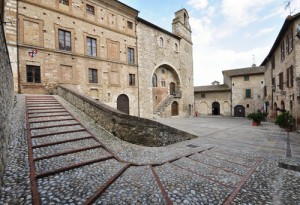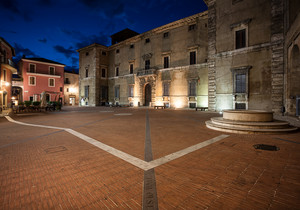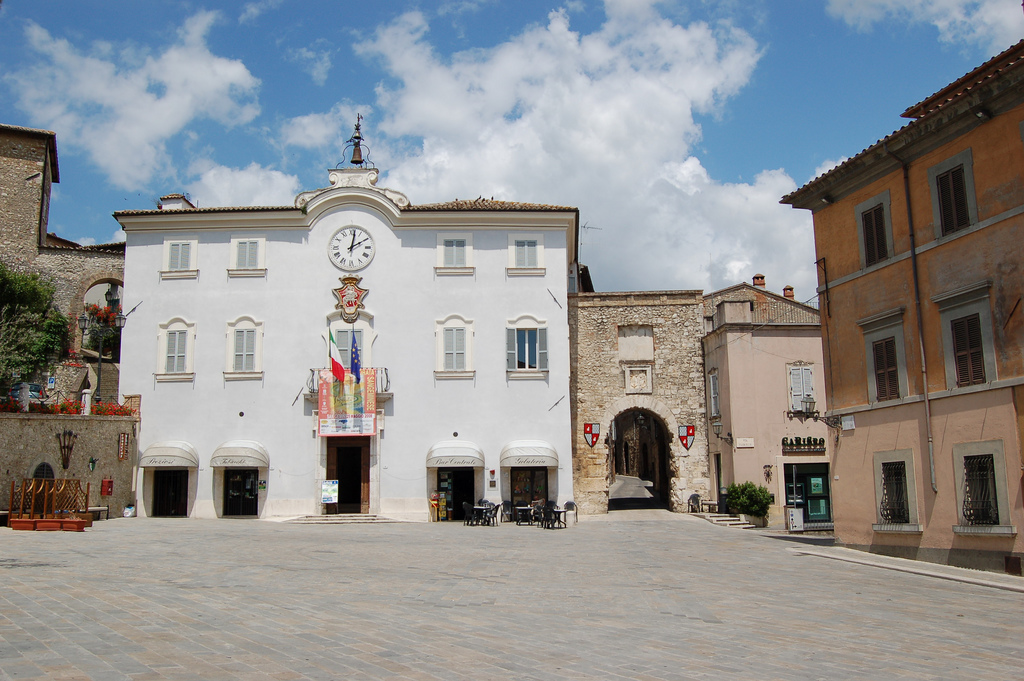The Route of Mineral Waters: San Gemini and Acquasparta
The Route of Mineral Waters: San Gemini and Acquasparta
The Michelangelo Palace Hotel reccomends some interesting itineraries: The Route of Mineral Waters
San Gemini
 This village of medieval urban layout, though of Roman origin, and with remarkable monuments, links its name to the spring of mineral waters. The suggestive old centre awaits the tourists beyond Porta Burgi
This village of medieval urban layout, though of Roman origin, and with remarkable monuments, links its name to the spring of mineral waters. The suggestive old centre awaits the tourists beyond Porta Burgi
Tourist highlights
Palazzo de Capitano del Popolo: (12th.13th c ), is characterised by a beautiful flight of steps. Inside are frescoes with scenes for working life.
S. Francesco church (13th-15th c), the front portal in in fine gothic style that also characterises the interior, where the 15th-16th century frescoes are found.
San Giovanni Battista Church :the interesting Romanesque façade dating from 1199 and Cosmati portal can be admired.
San Carlo Oratory: frescoes dating from the 14th and 15th centuries
San Nicolò Abbey: it dates back to the 11th century. Worth mentioning are the portal (the original is exhibited at the Metropolitan Museum in New York) and the capitals surmounting the inner columns.
Geolab: didactic geological laboratory on Umbria an the area of San Gemini.
San Gemini spring
The springs flow within forests of trees that are centuries old. Already renowned in ancient times for their therapeutic properties and for their high calcium content, they are known as “waters of the well-being and are ideal for children and convalescents.
Acquasparta
 Situated on a hill along the valley of the Naia stream, it is a famous spa resort thanks to the Amerino spring, as suggested by its place name :”ad aquas partas”, that is the “at the springs”. The town was founded approximately in the tenth century, although reliable information dates from 1002. after a long time under the jurisdiction of Todi, in 1489 it was declared “city-state” and in 1588 became a duchy. At the time of Frederick II it experienced magnificence and fame thanks to the foundation of the “Accademia dei Lincei” focussing on scientific research and featuring, among its served remarkable monuments.
Situated on a hill along the valley of the Naia stream, it is a famous spa resort thanks to the Amerino spring, as suggested by its place name :”ad aquas partas”, that is the “at the springs”. The town was founded approximately in the tenth century, although reliable information dates from 1002. after a long time under the jurisdiction of Todi, in 1489 it was declared “city-state” and in 1588 became a duchy. At the time of Frederick II it experienced magnificence and fame thanks to the foundation of the “Accademia dei Lincei” focussing on scientific research and featuring, among its served remarkable monuments.
Tourist highlights
Palazzo Cesi
Noble residence of the Cesi family, it was built in 1561 by G.D. Bianchi on a pre-existing fortress destroyed early in the 1500th it has been the seat of the “Accademia dei Lincei “. The rooms of the noble floor show decorated wooden ceilings. Most of the portrayals, attributed to Lombardelli glorify the Cesi family.
San Francesco church (13th c)
Santa Cecilia church: built in the 15th century, it was altered in the 1600th and 1700s, inside are canvases dating from between the 16th and 19th centuries and the 15th-century Crucifix, attributed to the Umbrian school.
Crucifix church: built in 1300s and transformed in 1600s,it hosts many work of art, e.g. the “Madonna Teutonica” 0(15th c) by Polinori
San Giuseppe church (18th c)
Sacrament church (17th c): worth seeing is a floor mosaic coming from the area of Carsulae.
San Giovanni in Butris church – Fonnaia Bridge. The church was built along the Via Flaminia near the Naia stream. The remaining two arcades of a roman bridge may be seen.
On the outskirts of Acquasparta are the Amerino Baths and the Spring.
It is also known as the “water of St Francis” because the Saint used it. Its therapeutic properties are universally recognised and ideed, G.A. Corelio, in a treatise, defined them “golden water”.
The Route of Mineral Waters: San Gemini e Acquasparta
Hotel Michelangelo Palace Terni



